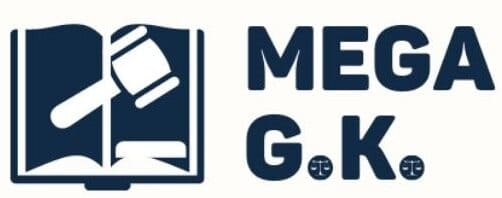
The Juggling Act and Why Balancing Board Exams and preparing for CLAT 2026 Feels Like a never-ending race
Balancing Class XII board exams and CLAT Preparation 2026 feels, at first glance, like trying to sprint and run a marathon simultaneously. One demands rigorous memorization and deep conceptual clarity, the other tests analytical agility and split-second decision-making. Yet, faced with these two academic juggernauts, thousands of students find a path that not only survives both but thrives. How? By adopting innovative study techniques, questioning conventional wisdom, embracing a growth-oriented mindset, and treating every study hour as a chance to do better!
Why Conventional Planning Falls Short
Most study guides begin with “make a timetable” or “start early.” Certainly, those are sensible starting points, but they lack nuance. Timetables often become rigid, leading to frustration when real-life schedules, unexpected quizzes, illnesses, family obligations, etc. clash with your “ideal” plan. And starting early without a strategy can devolve into aimless reading. A year before exams, you might spend hours on a topic you barely revisit, leading to shallow retention.
A more critical approach calls for dynamic planning. Instead of a rigid daily timetable, envision your calendar as a more flexible structure that evolves with your needs. Rather than trying to give equal weight to board exams and CLAT every single day, align your priorities with a priority-based academic roadmap. The trick is to lean hard into board prep when those exams loom and then pivot to CLAT as its own test date approaches.
A balanced study schedule ensures consistent progress in both domains without overburdening yourself.
Here’s how you can map your day:
- Dedicate mornings to high-focus tasks like Legal Reasoning and Critical Reasoning and attempt one sectional test every alternate day.
- Use school hours productively, taking active notes and participating in discussions.
- Reserve post-school evenings for board subjects. Practice and revise regularly.
- Keep at least one hour for Current Affairs and Editorial Reading (from newspapers or curated digests) at night.
- Allocate Sundays for taking full-length CLAT mocks and board subject revisions alternatively.
The timetable must remain fluid. For instance, in the months closer to CLAT (say September to November), increase CLAT focus to 70% and boards to 30%. After the CLAT exam, reverse this ratio. Balancing boards and CLAT isn’t about choosing one over the other, but integrating both smartly. With early planning, consistent execution, and the right support system, students can succeed in both exams and step confidently towards acing CLAT 2026.
Tips to Excel in CLAT 2026 along with Board Exams
Once you’ve committed to cracking the CLAT exam, the logical next step is to begin systematically working through the syllabus. Start by ranking topics based on their importance and weightage in the exam. Create a well-structured study plan that comprehensively covers all areas outlined in the CLAT syllabus. Most importantly, allocate your time intelligently, focusing more on practicing while ensuring consistent coverage of the entire syllabus.
- Practice Smart with Mocks
Begin with one mock per week, gradually increasing the frequency over the subsequent months. Post-mock analysis is crucial. Identify weak areas and refine your study plan accordingly. - Read newspapers and refer to reliable e-resources regularly
Ensure that you prepare from multiple resources instead of sticking to just one or two newspapers. Prepare consolidated notes and revise through monthly compendiums. - Use Expert Support Wisely
While self-study is valuable, mentorship platforms like Mega G.K. provide structured guidance, personal mentorship, relevant material, and doubt resolution, enhancing your performance. - Time yourself
CLAT is not just about knowledge, it also about applying that knowledge with speed and accuracy. Practice sectional tests and mocks with a ticking timer. This helps you increase your speed without hampering accuracy. - Shifting Focus Post-CLAT
After CLAT concludes, direct all efforts to board exams. Use this period for thorough revisions, writing practice, and addressing any academic gaps. Rely on NCERTs, past year papers, and teacher support to strengthen board exam readiness.
Common Pitfalls to Avoid
To maintain an effective balance between CLAT and board preparation, it’s essential to steer clear of certain habits that may hinder progress. Theres Here are some practical missteps to avoid:
- Stay efficient by avoiding the following:
- Don’t use multiple books for one subject be it for board exams or for CLAT. Stick to trusted resources like Mega G.K. for CLAT and NCERT, past-year papers, and study notes for your board exams.
- Avoid mock tests from unreliable sources. Choose reputable platforms that simulate CLAT accurately. Mega G.K. provides you with especially curated mock tests that prepare you to tackle any type of questions that CLAT 2026 may have in store for you.
- Don’t compare your progress with others, it breeds unnecessary stress. Analyse your mocks thoroughly and work on your weaknesses. Remember, you are your only competition.
- Minimize social media use to avoid distractions. However, taking regular breaks is equally necessary to freshen your mind. Spend time with family members, play a sport or go for a walk when you need a little break.
- Don’t be too harsh on yourself. CLAT is a journey and you must enjoy it while you travel. Be consistent with your efforts and make sure you do the smart work too!
- Break long study hours into short, focused sessions to maintain retention and avoid fatigue.
Month-by-Month Focus Map
Balancing CLAT and board exams requires a need-based approach that adapts with time. The following monthly roadmap will help you align your efforts based on what matters most at each stage.
April–June:
- CLAT (60%) | Boards (40%)
- Build strong fundamentals in CLAT sections and cultivate a habit of regular reading.
July–September:
- CLAT (70%) | Boards (30%)
- Increase mock frequency, deepen accuracy, and manage school assignments alongside CLAT practice.
October to Mid-December:
- CLAT (90%) | Boards (10%)
- Full focus on CLAT revision, intensive mocks, and strategic prep. Maintain lighter revision for board exams.
Post-CLAT to March:
- Boards (100%)
- Transition to complete board preparation. Focus on revision, answer writing, and practice.
Conclusion
Balancing board exams and CLAT preparation might feel tough, but with a smart plan, it becomes much easier. By staying flexible and focusing on what matters most at the right time, you can manage both without feeling overwhelmed. Avoid distractions, keep practicing regularly, and remember that doing well in both exams is possible with consistent efforts, dedication and faith in yourself.
BOOK FREE 7 DAYS DEMO CLASSES DEMO
